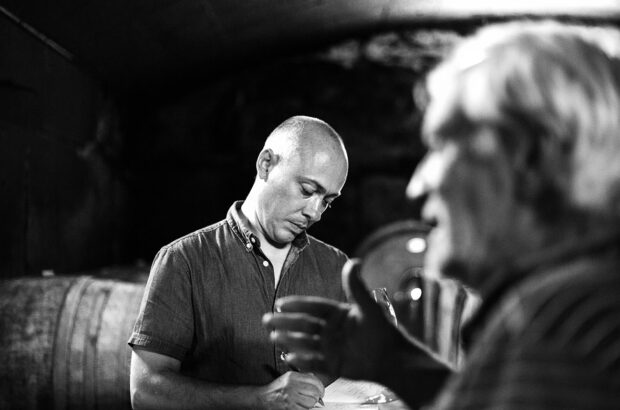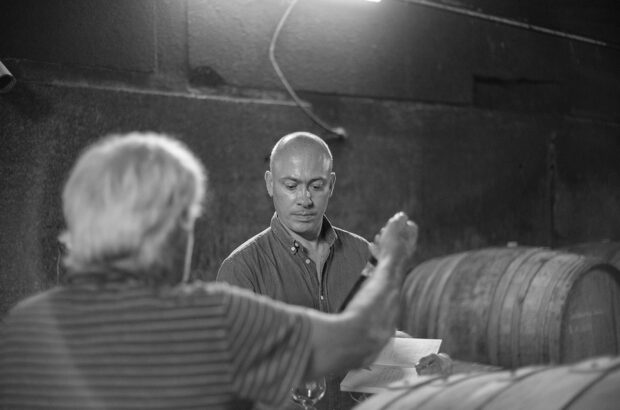This once maligned grape is now popular worldwide, but no one in the Barossa is complacent. CATHARINE LOWE reports on the evolving nature of this South Australian wine
Wine label designers in the Barossa have had a busy time keeping up with Shiraz. In the last 20 years it has been sold as many things, from fortified to clear sparkling (having been ignominiously carbon-stripped of its glorious colour) to a dry, generic Southeast Australia blend and even as an ingredient for muffins. Now, however, Shiraz labels are not only valley-specific but also draw attention to particular sites, vineyards, blends and old vines. And given that the grape’s growing popularity has been allied with a shift into winemaking by long-term growers and a subsequent burgeoning of boutique wineries, a lot more work has been rolling in for those label designers.So now it’s clearly labelled and highly prized, but what is the style of Barossan Shiraz? Fabulously concentrated plummy fruit, vanilla, chocolate and eucalyptus character? Or am I also hearing big oak, high alcohol and astringent tannins – still wonderful, but overpowering to all but the influential Australian wine shows and certain American critics? It is a bit of both, according to winemakers small and large, in both the Barossa and Eden valleys, who greatly value the unique New World style, while also highlighting a move afoot to craft sleeker, more elegant wines.
‘We are tweaking to gain more elegance and finesse,’ explains Richard Sheedy, general manager at Elderton, whose premium wine, Command, is quite a blockbuster. Tweaks include using more French oak and trying to harvest a little bit earlier to reduce the alcohol. ‘It has been at 14.5 to 15, and we’re trying to pull it back by half or one degree, but we are not trying to be Old World. We have our style and that works very well and we will stay with it.’Geoff Schrapel says that at Bethany grapes are picked a little bit less ripe, not left on the skins for so long, and not pressed so hard; added to this, yields have been reduced. ‘We’re trying to get more flavour but with more finesse; we’re looking for more fruit.’ The wine still tends to go into American oak, but with less emphasis on ‘new’. The style debate has been prompted by international recognition, as Robert Parker’s score system recently scooped a couple of Barossan Shirazes into the 90+ point – and price – league. However, says Schrapel: ‘What we think is a good Barossa Valley style is not necessarily what he thinks [is good]. He tends to go for big, tannic reds – bigger than we would choose.’ The Australian show system is also frequently cited as encouraging blockbuster-style wines. ‘The show system is important to us winemakers as it shows we’ve done a good job, but it’s not always hand in hand with what consumers want,’ says Caroline Dunn, senior red winemaker at Beringer Blass.
In the last 20 years, international recognition has also brought about a seismic shift in the Barossa, as more growers, many with vineyards that have been in the family for five or more generations, have stepped over into winemaking, with considerable success. Peter Schulz made the leap in 1990 at Turkey Flat; David Powell at Torbreck Vinters in 1994; Kym Jenke at Jenke in 1989; and Peter Scholz at Willows in 1987 – to name but a few.
Beringer Blass is one of the wineries to have embraced the regionality route in the last two years – previously the Wolf Blass wines were always blended from a number of the regions in the area. ‘We didn’t have a Barossa Valley Shiraz until recently and now we are regionalising to the point of single vineyard. It’s good for the public and cellar door,’ says Dunn. In a bid for a contemporary style, she adds that there is also less emphasis on oak domination and more on fruit. Orlando (whose Jacob’s Creek brand is still believed by many to be Australia’s biggest wine region) also acknowledged the value of the Barossa name when it released Centenary Hill, its first 100% Barossa Shiraz for more than two decades, in 1998. The style of Barossa Shiraz also varies across the region and, more significantly, as you climb up into the hills of the Eden Valley, where grapes have a longer ripening period and harvesting is two to three weeks later. Here, wines can be more vegetal and spicy, with hints of mint and a potentially more elegant structure than those from the valley floor. An example of Eden Valley fruit comes through in Grant Burge Special Blend Shiraz; the 1999 has a notably minty, aromatic nose with ripe fruit, subtle tannins and elegant length on the palate.
It’s also up here that Henschke’s Hill of Grace vineyard is home to the ‘grandfathers’, the low-yielding, knarled 140-year old vines, still on original rootstocks. Along with fermentation in waxed concrete open vats, heading down boards and finishing the ferment in barrel, the age of the vines is key to Henschke’s concentrated ageworthy Shiraz in Hill of Grace and Mount Edelstone. Many of the older vines are dry-grown, quite a feat in this hot country, but as advocate Charlie Melton says: ‘Once the vines have survived a number of years they are indestructible, producing more intense fruit.’ Some argue that a little bit of water would produce more balanced wines, yet proof of quality is to be found in the perfectly balanced wines produced by the likes of Melton, Henschke and Rockford.
While the reversal in fortune of Shiraz is down in part to the massive turnaround that can be seen in the whole Australian wine industry in the last 10 years, it is also due to the determination of the winemakers, whose livelihood depended on the survival of this grape. In Barossa the cars may be new and the houses freshly painted, but memories are not that short and no journalist is given the privilege of tasting their wines without taking on board the hard graft that has ensured the old Shiraz vines are still in existence. The 1970s were a difficult time, equipment was old-fashioned, and there was no table wine culture. Then came the red grape surplus of the early 1980s, as white wine boomed. Shiraz grape prices dropped to $200–300 (£70–£105) a tonne: cue the muffins and the government’s vine-pull scheme. ‘It was very tough. No one was drinking red wine. We couldn’t sell it,’ says Robert O’Callaghan of Rockford. Now, the highest quality, old vine Shiraz grapes are exceeding AU$3,000 (£1,050) a tonne.
Back in the 1950s, there were few experts on the potential of this red grape and it was Max Schubert at Penfolds who experimented with, and discovered, the marriage of Shiraz and American oak (in answer to Bordeaux’s wines when neither Cabernet Sauvignon or French oak was available in Australia). His massively concentrated, dry red wine – at a time when fortified was the rage – so unimpressed Penfolds that he was told to stop. Luckily he didn’t and the result, Grange, is now considered Australia’s finest (and most expensive) wine.
But can Shiraz maintain and even increase its popularity? Can the Barossa raise awareness of its individual style or should the larder be kept stocked with flour for muffins? And what of the extensive new plantings going on in Australia and forecasts of a world grape glut? The amount of Shiraz planted is only just back up to early 1980s levels and the nature of the valley – the age of the vines, the scarcity of water, the experience – is in its favour, so the signs are good. However, Penfolds’ Peter Taylor sounds a note of caution. ‘Quite a lot of people will go broke if they don’t concentrate on quality and on planting with a long-term view. The Barossa is all about quality and people have to realise that potential.’







